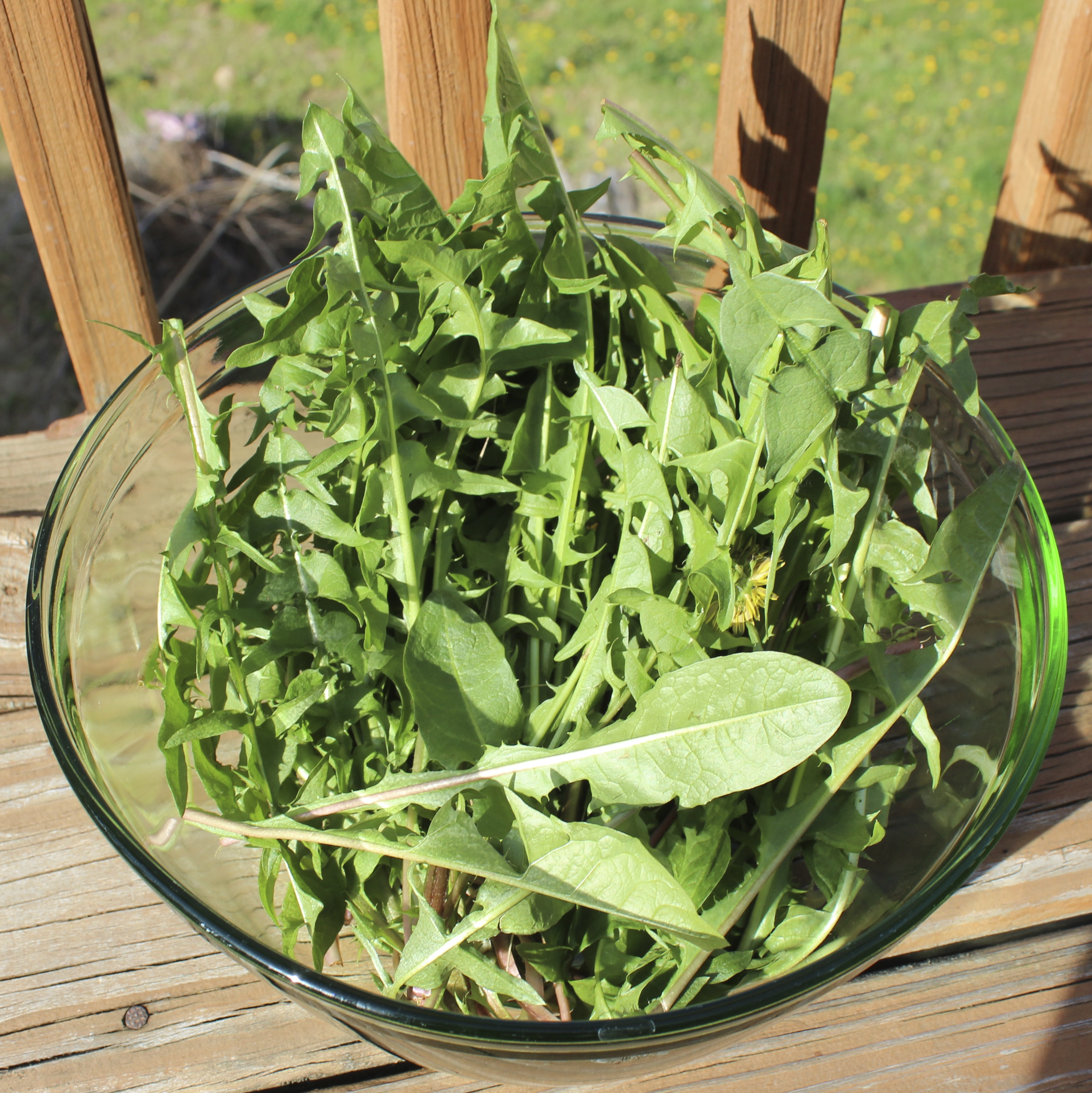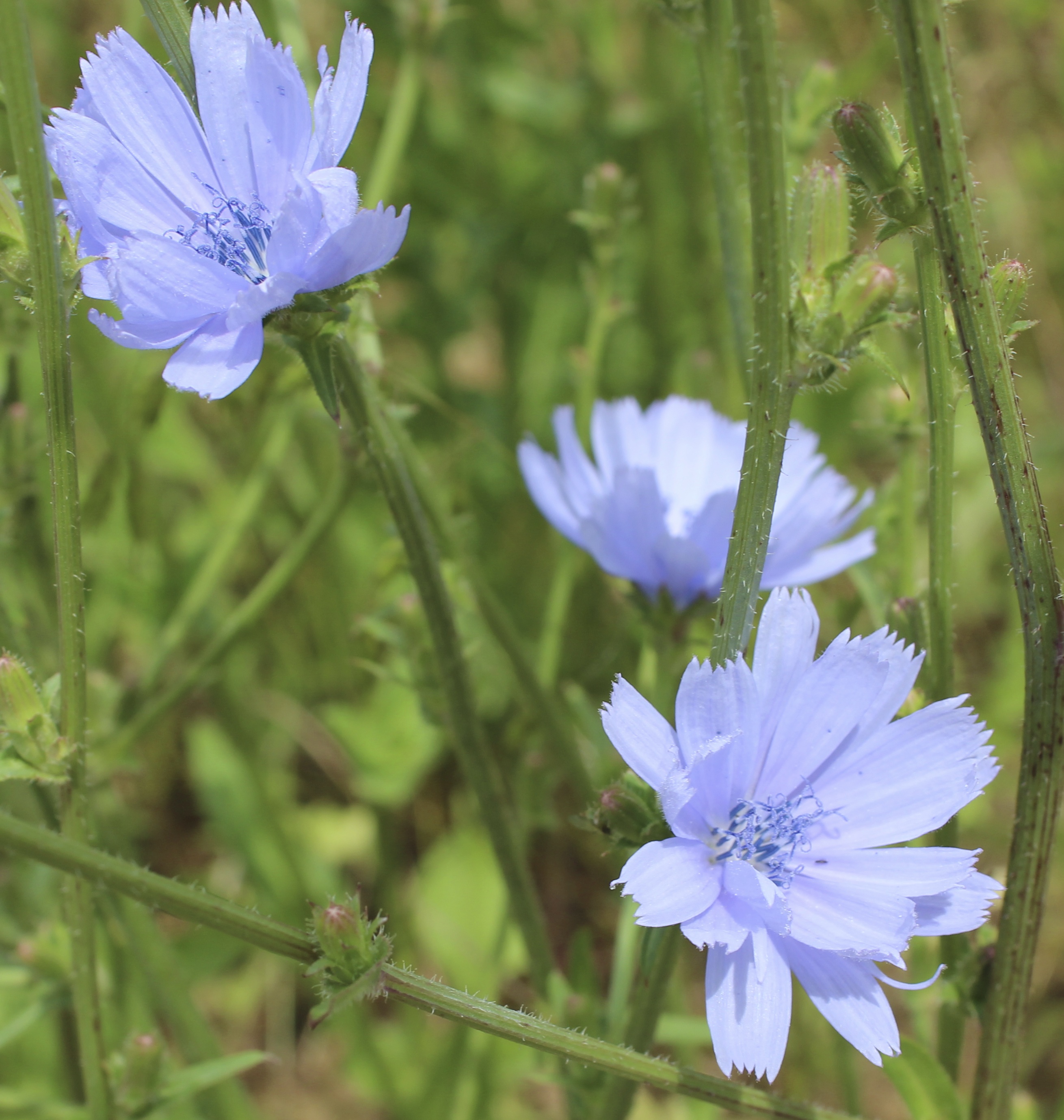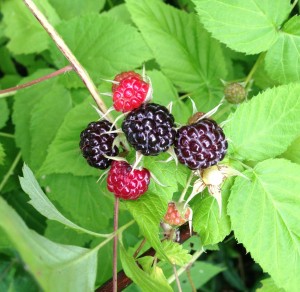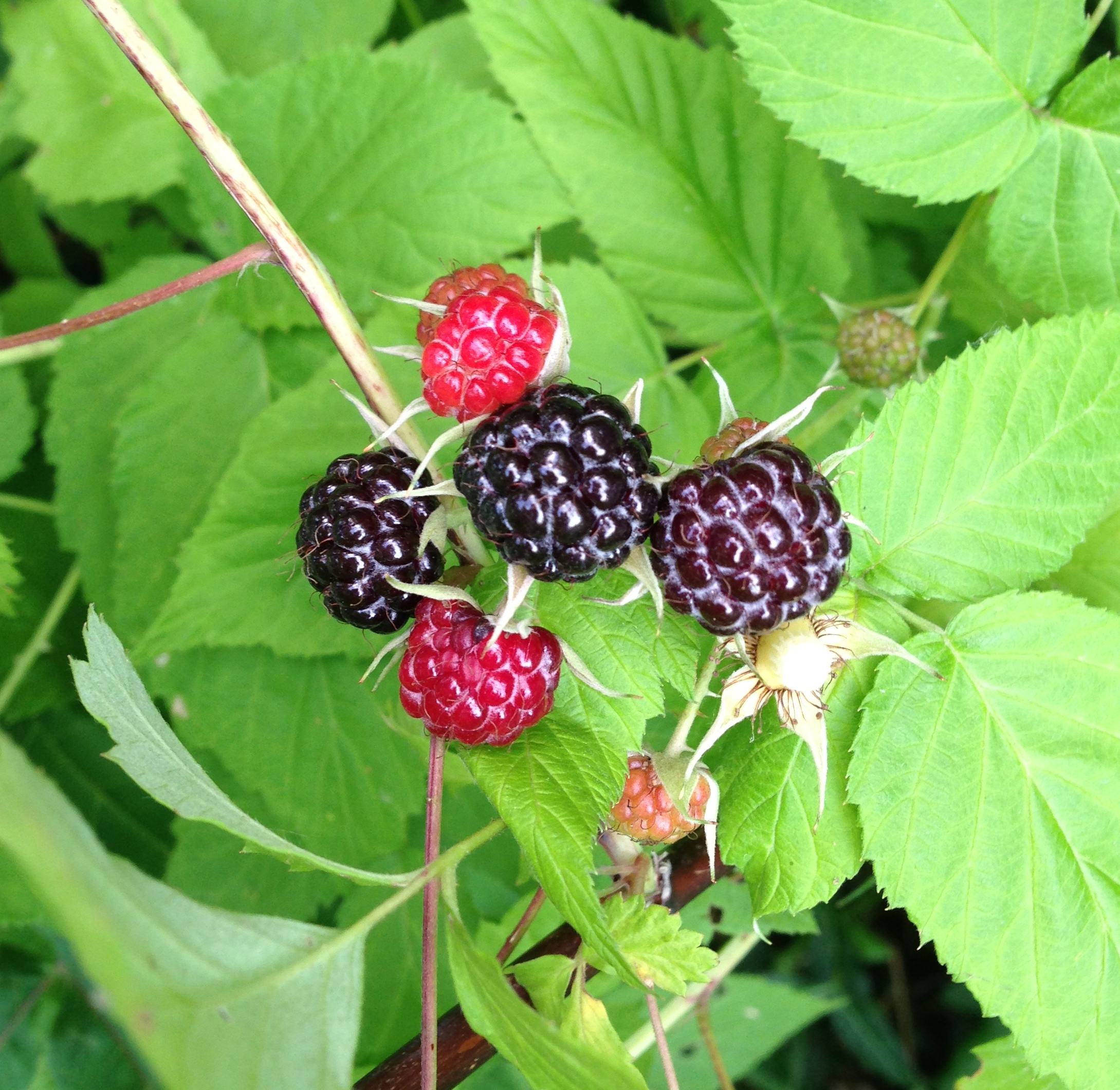{I am insanely pleased to introduce a new series on the blog… foraging! I have long wished to be one of those cool folks who could float magically through the forest and come out with edible foods but I’ve never taken the time to educate myself on the subject. Now my friends at Kentucky Forager are going to help us all a little further along the path to self-reliance with a new series here and a vast store of info on their own blog. Check ’em out and be sure to like their page on Facebook!}
What comes to mind when you think of wild edible plants? Morels? Ramps? Blackberry cobbler? Do you think of pioneers, cavemen, doomsday conspiracy theorists, or even your own grandparents? Positive or negative, everyone seems to have some preconceptions about foraging.
The majority of parents protect their children from poisonous plants by telling them that most wild plants are poisonous. As a result, many people grow up fearing some of the most beneficial edible and medicinal plants. I was, for the most part, one of those children. I had picked my fair share of blackberries, and eaten plenty of “dry land fish”—but anything beyond the handful of plants we knew were safe was considered dangerous. This misconception is so indoctrinated in our minds, that most people would never believe that the majority of the plants you see in the wild are not only safe to eat, but also very nutritious.

In a not-so-distant past, foraging was a standard part of the human diet. Dandelion greens, poke greens, and sassafras tea (just to name a few) were all regularly consumed as celebrated spring tonics. With very few fresh vegetables available in winter, the first wild greens of spring were prized by many. But the bigger the agriculture business became, the farther removed people became from their food source. Just a few short years ago, almost every Kentucky family grew a garden, and almost everyone knew how to prepare and preserve their harvest. The recent years have all but weeded out those last remaining bastions of self-sufficiency, and the human diet has evolved to consist of only a small variety of plants. Thousands upon thousands of edible plant species exist, yet we find ourselves eating a mostly corn and potato based diet, and we praise ourselves for eating an oil glazed, preservative packed bowl of lettuce.
If you are a regular reader of Sustainable Kentucky, you are already well aware that most people in this consumer driven world don’t know anything about their food beyond the grocery store shelves. I believe this mentality is slowly but surely being reversed. This superficial “green lawn” mentality where the only plants people care about growing are grass and useless ornamental shrubs. I live in a suburban neighborhood where there isn’t one garden in sight. There is, however, lawn after lawn of chemical laden, concrete framed grass squares. When we first moved into our current home, our next door neighbor came over. She did not come over to welcome us, but rather to inform us that she had called and complained to the realtor to have the dandelions sprayed before we moved in. Her subtle insinuation was not lost on me. However, her hollow threat will not stop me from growing a cornucopia of wild delicacies on my side of the fence.

If eating local and seasonal is your goal, but you find yourself with limited garden space, then foraging is the way to go. Eating local organic food can have a price tag that is almost as big as the payoff, but foraging can help reduce the sting. Most people think foraging is hard work (and I wouldn’t disagree with that), but it is also rewarding in so many ways. There are the obvious rewards, the free food, the healthier diet, and the exercise; but very few feelings can compare to the feeling you get when you stumble upon a plant you’ve been searching for. When you discover a prized edible for the first time, or when you are driving down the highway and you can identify all those “weeds” on the side of the road. It’s like looking at the world through new eyes. That feeling of satisfaction is the reward that keeps me going back, even on the rare occasion that I come home empty handed. And last but certainly not least, it could save your life. Ok, so maybe I’m being a little dramatic, but whether or not survival preparedness is your goal, you will certainly gain some important knowledge. For most of us, the chances of being in a survival situation are pretty slim, but that doesn’t lessen the peace of mind you have by knowing you would be well prepared. The sad fact is that the majority of people, even in rural communities, have survival skills that are roughly equivalent to that of a three year old child. If they were lost in the forest they’d starve to death searching for the frozen aisle.

If you are interested in foraging, be sure to do your homework. There are plenty of books and informational websites that can teach you everything you need to know about foraging if you are willing to take the time to learn. It’s a lot to take in, but don’t let it overwhelm you. Remember, if it were easy, everyone would be doing it. To start, familiarize yourself with the poisonous plants in your area, and a handful of common, easy to identify edibles. Beyond the basics, the best approach to take is the “learn as you go” approach. There are so many plants out there, you can’t expect to learn them all before you begin. You can stare at pictures of plants all day, but the only way to truly become familiar with a plant is to see it for yourself. Most of what I’ve learned was from going on hikes, taking lots of pictures, and identifying them at home. Regardless of the approach you take to learning, please remember to be safe, respect the land, and remember these basic foraging guidelines:
-
First, and most importantly, NEVER eat anything you haven’t positively identified. If there is any doubt, don’t eat it. Most plants are safe, but that doesn’t change the fact that there are some plants that can kill you.
-
Never harvest a plant you are unfamiliar with, it could be a protected or even endangered species in your region.
-
Never take more than you need.
-
Harvest sustainably. A good rule of thumb is to never take more than 1/10 of the plant colony from which you are harvesting. (This rule is variable. Again, be familiar with the plant. Is it slow growing? Take note, year to year on the size of the stand from which you are harvesting. If you notice the colony is shrinking, cut back on the amount you take. If you want to continue enjoying the plant in the future, it is very important that you maintain it’s growth.) If you are harvesting the fruit or leaves (or any part that doesn’t kill the plant) you can be more liberal. Still, it is wise to never take more than one third. Be considerate of other foragers, and more importantly, the wildlife that depend on these plants.
-
Be familiar with the land you forage. Not all land is chemical free. (i.e. Near highways or farm land that has been treated with pesticides/herbicides.)
-
Always get permission from the landowner before foraging on private property.
-
Know the early signs of poisoning in plants. When plants have been sprayed, they will usually stay green (but usually look shriveled and droopy) for a couple of days before drying out.
If you want to read more about our foraging adventures, please visit our blog, kentuckyforager.com. If you have any questions, feel free to email me at kentuckyforager@gmail.com.
“Live in each season as it passes; breathe the air, drink the drink, taste the fruit, and resign yourself to the influence of the earth.” -Henry David Thoreau
